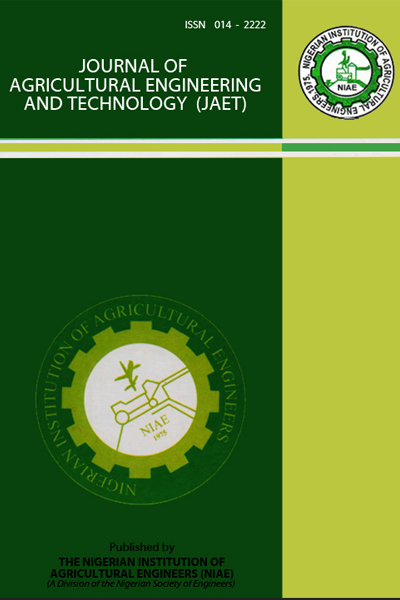PREDICTION ACCURACY OF THREE INFILTRATION EQUATIONS FOR A SANDY LOAM SOIL IN MINNA, NIGERIA.
Abstract
Prediction of soil infiltration is a complex process with many factors contributing to the rate. Three infiltration models were chosen to ascertain their predictive ability of a sandy loam soil in Minna, Nigeria. The models were Kostiakov, Philip and Horton infiltration equations. Field measurements of infiltration were conducted using the double ring infiltrometer. Parameters were developed from measured infiltration data for each of the equations and laboratory analyses of soil samples were carried out. These models were compared to determine which one most accurately predicted the measured infiltration rates from the field data. The R2 values of the Kostiakov, Philip and Horton models were 0.979, 0.611, and 0.757, respectively. The results indicate that Kostiakov provided the best fit with the field measured data among the models tested. The root mean square error (RMSE) of the infiltration equations showed that
Kostiakov had the least value of 0.723 compared to that of Philip and Horton with RMSE values of 1.669 and 2.470, respectively. All three models studied provided good overall agreement with field-measured data. However, Kostiakov provided the best fit with experimental data for the soil and is therefore recommended for the characterization of the infiltration process of the study area.


